Considering a cruiser boat? Here’s what to know.
Whether you’re planning relaxed day trips, coastal weekends, or long-range adventures, choosing the right cruiser is essential. From compact cabin boats to high-performance sport models and full-featured motor yachts, each type is built for a different kind of boating lifestyle. The ideal choice depends on how far you want to go, how often you’ll use it, and the level of comfort and capability you’re after. Below is a breakdown of the three main categories of cruiser boats — covering performance, onboard living, handling, upkeep, and budget.
Types of Cruiser Boats: Matching Design to Experience
Cruiser boats generally fall into three main categories: Compact Cruisers, Sport Cruisers, and Luxury Cruisers. Each has its own advantages, limitations, and best-fit usage. Understanding these tiers will help you make a confident, informed decision that suits your on-water lifestyle.
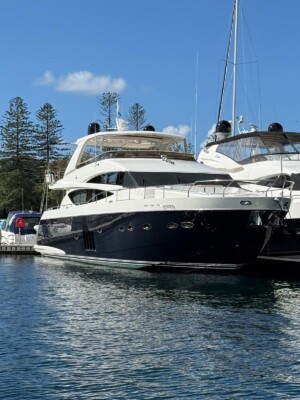

Compact Cruisers
Smaller, cabin-equipped & trailerable
Best for: Day cruising on lakes, rivers, bays, and sheltered coastal waters; ideal for couples, small families, or first-time buyers looking for comfort without complexity
General size: 6m – 8.5m
Construction: Fibreglass or aluminium hulls
Features: Compact cabins with sleeping space, basic galley setups, marine toilets, convertible dinettes, hardtops or biminis, swim platforms, and easy helm access. Designed for simple overnighting, protected-water comfort, and ease of towing and storage.
Price range: $75,000 – $200,000+
Popular brands: Bayliner, Jeanneau, Whittley, Four Winns, Arvor

Sport Cruisers
Performance-oriented & coastal capable
Best for: Coastal cruising, weekend getaways, entertaining guests, and short liveaboard trips. Ideal for boaters who want a balance of speed, comfort, and versatility.
General size: 8.5m – 13m
Construction: Fibreglass planing hulls
Features: Spacious cockpits with wraparound seating, enclosed cabins with galley and toilet, V-berth or mid-cabin layouts, integrated hardtops or enclosed helms, twin outboard or sterndrive power, extended swim platforms, and advanced electronics. Built for stability at speed and comfort at rest.
Price range: $180,000 – $1M+
Popular brands: Sea Ray, Jeanneau, Regal, Maritimo, Monterey, Bavaria, Beneteau

Luxury Cruisers
Long-range, liveaboard-capable & premium appointed
Best for: Extended coastal or offshore cruising, full-time liveaboard lifestyles, multi-day adventures, and entertaining in comfort and style. Suited to experienced owners seeking range, autonomy, and luxury.
General size: 13m – 25m+
Construction: High-end fibreglass or composite displacement/semi-displacement hulls with multi-deck layouts and advanced engineering systems
Features: Multiple staterooms with ensuite bathrooms, full galleys, large saloons, flybridges with second helm stations, crew quarters (in larger models), joystick or shaft drive systems, long-range fuel tanks, stabilisers, air conditioning, and premium finishes throughout. Built for ocean capability and resort-level comfort.
Price range: $550,000 – $5M+
Popular brands: Riviera, Princess, Maritimo, Sunseeker, Azimut, Fairline, Horizon
Did you know? Some cruiser boats can travel over 300 nautical miles on a single tank — making them perfect for weekend escapes or spontaneous coastal getaways.
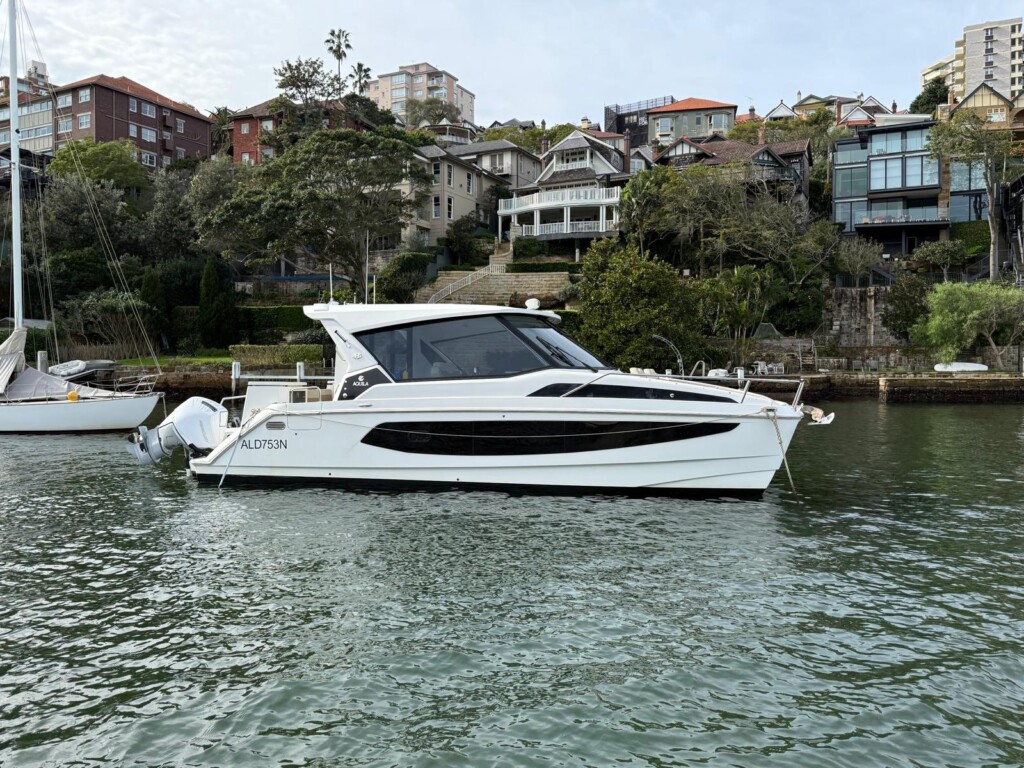
Before You Buy: Key Considerations
Cruiser boats come in many shapes and sizes. Choosing the right one depends on how you cruise, where you go, and how much comfort you want onboard.
- Primary Use: Day trips, weekend escapes, or long-range cruising? Match the boat’s size, layout, and range to your most common adventures.
- Hull & Drive: Outboards are easy to maintain and free up space. Inboards or sterndrives offer smoother performance and lower profiles. Deep-V hulls are best for offshore.
- Layout & Amenities: Focus on cabin comfort, seating, toilet access, and galley space. Think about how you’ll relax, cook, and sleep onboard.
- Size & Capacity: Consider how many people you’ll bring, how far you’ll go, and how much fuel, water, and storage you need — then balance that with handling and mooring ease.
- Budget: Factor in more than the purchase price. Include fuel, insurance, servicing, gear, marina fees, or trailer and storage costs.
Accessories You’ll Likely Need
A well-equipped cruiser isn’t just about comfort — the right gear ensures safety, ease of handling, and a more enjoyable experience on the water.
Essentials:
- Approved PFDs/lifejackets
- Anchor, chain, and rope suited to your cruising grounds
- Full safety kit (flares, fire extinguisher, horn, first aid)
- Mooring lines and fenders
- Shore power cable and battery charger
- Chartplotter with GPS and sonar
- Boat cover or bimini for storage and sun protection
- Lifestyle upgrades based on personal preferences
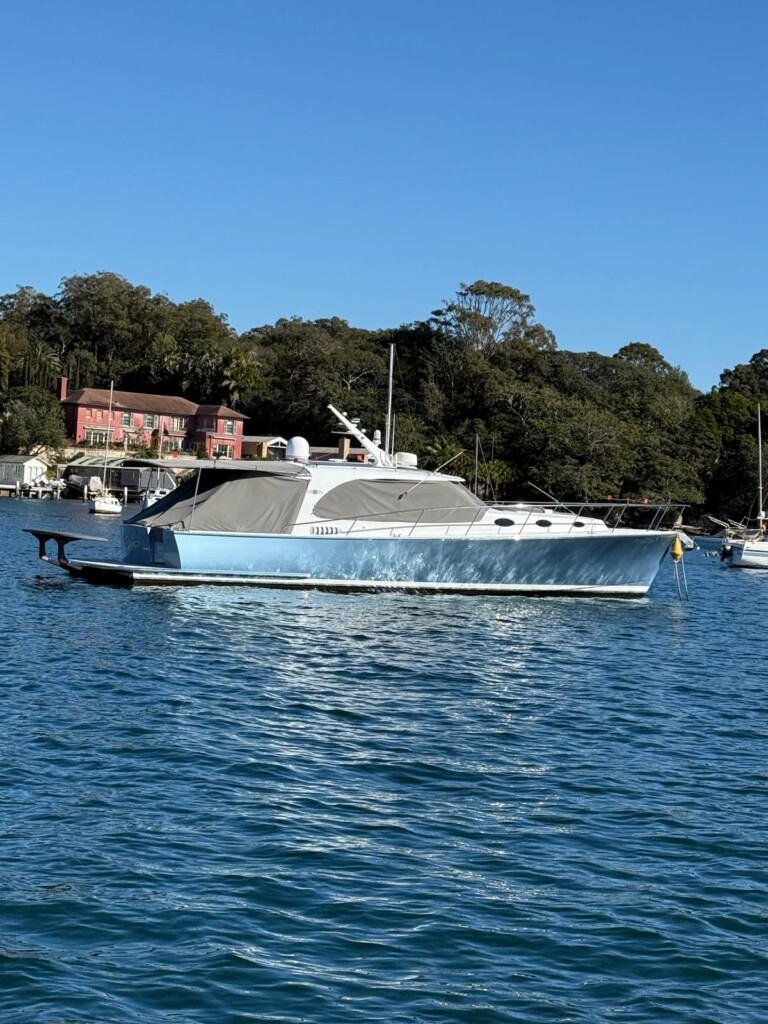
Maintenance & Care Tips
Cruiser boats are built for comfort and capability, but they still require consistent upkeep to stay reliable and ready for the water. Whether you’re running outboards or inboards, fibreglass or composite, regular cleaning and maintenance will protect your investment — and help avoid expensive repairs down the line.
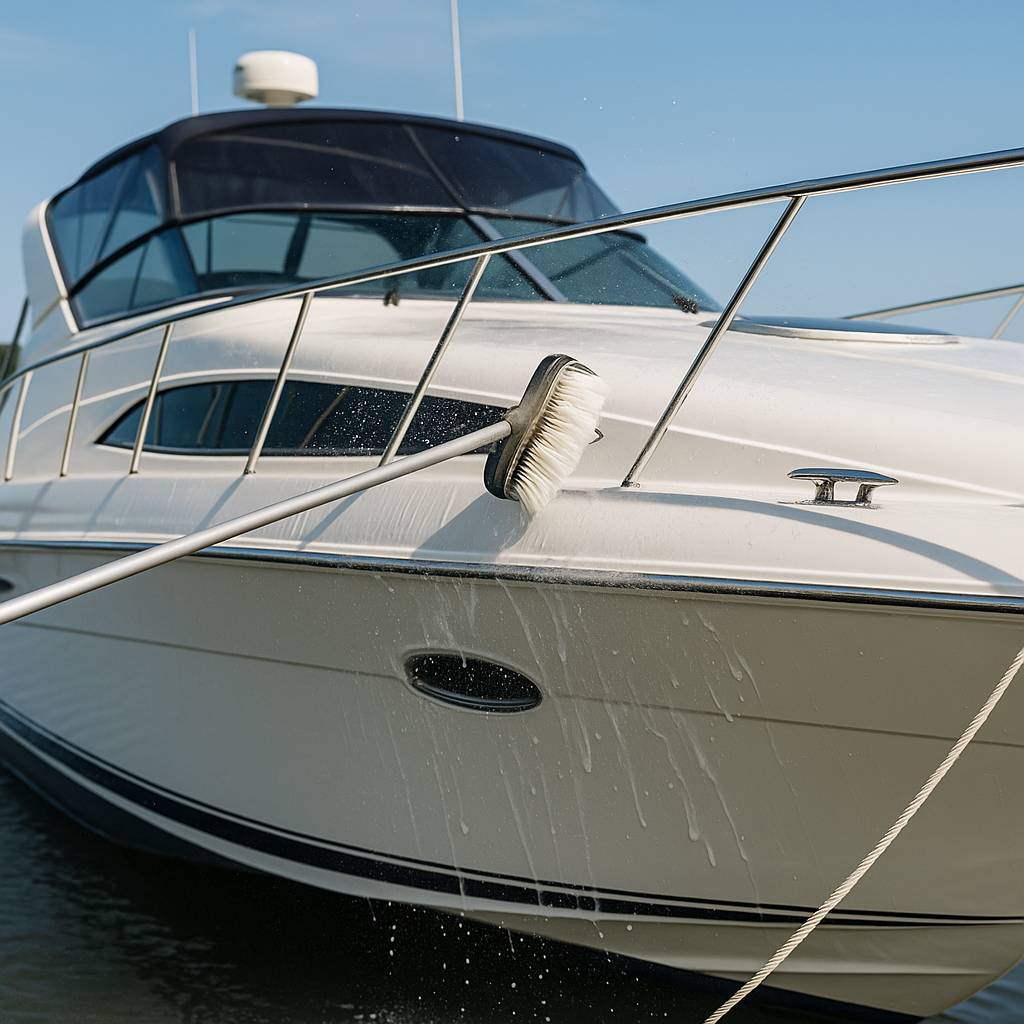
Flush and Service Your Onboard Toilets (Heads)
Marine toilets can quickly become a problem area if neglected. After each trip, flush with fresh water to clear salt and waste residue. Use biodegradable tank treatments to prevent odours, and check seals, hoses, and macerators for leaks or blockages. Regular upkeep avoids costly repairs and unpleasant surprises.
Rinse and Protect Stainless Fittings
Cruisers are full of stainless — from bow rails to cleats and latches. Saltwater can still cause pitting and rust over time. After every outing, rinse all fittings with fresh water and dry thoroughly. Apply marine-grade metal polish or corrosion guard periodically to keep them shining and protected.
Check and Charge House Batteries
Cruisers often run multiple batteries for lighting, fridges, pumps, and electronics. After each trip, inspect voltage levels, top up water if using lead-acid types, and ensure your battery charger or solar system is working correctly. Weak batteries are a common cause of electrical issues onboard.
Keep Bilges Clean and Dry
A clean, dry bilge is a healthy boat. Remove oil, water, or debris after each trip. Check bilge pumps and float switches for proper operation, and make sure drainage isn’t blocked. Regular bilge cleaning prevents smells, corrosion, and unnoticed leaks from becoming bigger problems.
Service Steering and Throttle Controls
Cruisers put hours on steering and throttle systems — especially with dual-engine setups. Flush salt from cable ends and linkages, lubricate moving parts, and inspect for stiffness or corrosion. Smooth, responsive controls are key to safe docking and maneuvering.
Clean and Seal Non-Skid & Deck Surfaces
Decks on cruisers see heavy foot traffic, food spills, and UV exposure. Rinse regularly and use a soft brush with non-skid deck cleaner to prevent build up. Once clean, apply a non-slip sealant or UV protector to keep surfaces looking good and safe underfoot.
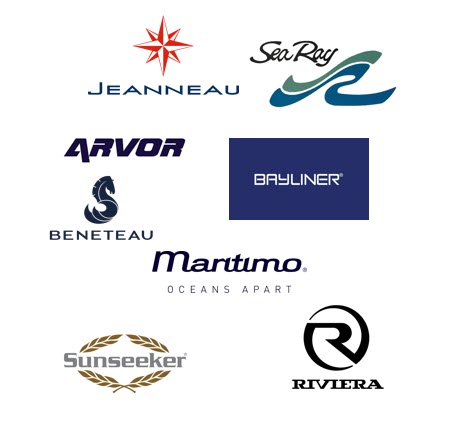
Warranty & Brand Reputation
With cruiser boats, a strong brand reputation goes beyond looks — it speaks to real-world reliability, resale value, and the quality of after-sales support. Reputable manufacturers typically offer multi-year hull warranties (often 5–10 years) and back their boats with proven components from trusted engine makers like Volvo Penta, Yamaha, Mercury, or MerCruiser.
Entry-level or offshore-built cruisers can seem attractive on price, but may offer limited warranty terms, non-standard components, or poor service access. Before you commit, review the warranty in detail — including coverage periods, conditions, exclusions, and required servicing. Choosing a well-known brand often means better dealer support, easier parts availability, and stronger long-term ownership confidence.
Don’t Just Buy a Cruiser – Buy the Right One
Choosing a cruiser isn’t just about size, engine type, or how many berths it has — it’s about finding a boat that fits the way you live on the water, and where you want it to take you. Whether you’re cruising local bays, planning overnight escapes, or dreaming of long-range adventures, the right boat balances comfort, capability, and future potential. Take your time. Prioritise build quality, practical layout, and features that suit how you’ll use the boat now — and how your boating lifestyle might evolve. A well-matched cruiser means more time exploring, and fewer frustrations getting there.
FAQs
What’s the difference between a cruiser boat and a motor yacht?
While both are designed for comfort and leisure cruising, cruiser boats typically range from 6 to 15 metres and are often owner-operated, with simpler systems and layouts. Motor yachts are generally larger (15m+), often come with crew quarters, and are built for long-range, liveaboard use with high-end amenities and complex systems.
What size cruiser boat is best for weekend trips vs long-range cruising?
For weekend cruising, boats between 6–10 metres (Compact or Sport Cruisers) with basic sleeping and galley facilities are ideal. For longer trips or offshore passages, look for Luxury Cruisers 12m+ with multiple cabins, extended fuel/water capacity, and redundancy in systems like power and steering.
Are outboard or inboard engines better for cruiser boats?
Outboards are easier to maintain, offer better cockpit space, and are ideal for trailerable or compact cruisers. Inboards (including sterndrives and shaft drives) provide a smoother ride, better weight distribution, and are more common on larger, offshore-capable cruisers.
How much does it cost to own and maintain a cruiser boat annually?
Annual costs typically range from $5,000 to $50,000+, depending on size, engine type, mooring/storage, insurance, fuel, servicing, and upgrades. Larger cruisers with inboard systems, air con, and electronics will require significantly more upkeep than compact models.
What’s the best hull design for a cruiser boat in rough water?
For offshore or rough coastal conditions, a deep-V hull offers the smoothest ride and best wave-cutting performance. Flat-bottom or shallow-V hulls are better suited to calm waters but can be less stable in chop or swell.
Do I need a license to operate a cruiser boat in Australia?
Yes, most Australian states require a boat licence for vessels with engines over a certain power (often 4.5kW/6hp+). For larger cruisers or those with multiple engines, specific endorsements or certifications may apply. Always check your local maritime authority’s requirements.
Can you live full-time on a cruiser boat?
Yes, many people live aboard larger cruiser boats (typically 12m+), especially flybridge and motor yacht-style vessels. Look for models with full galley setups, multiple cabins, onboard toilets and showers, large holding tanks, and reliable power systems for true liveaboard comfort.
What are the most important features to look for in a first cruiser boat?
Prioritise layout, ease of handling, fuel efficiency, and maintenance access. Look for safe walkarounds, simple helm controls, quality upholstery, accessible plumbing/electrical systems, and brands with strong after-sales support.
How often should a cruiser boat be serviced?
Most cruiser boats should have engine and system servicing every 100 hours or annually, whichever comes first. Bilge pumps, electronics, fuel systems, steering, and safety gear should be inspected more frequently. For inboards, don’t skip gearbox oil, shaft alignment, and exhaust checks.
What’s the resale value like for cruiser boats?
Well-maintained cruiser boats from trusted brands (e.g., Sea Ray, Jeanneau, Riviera) tend to hold value better. Resale depends on condition, engine hours, service history, layout, and desirability of brand/model. Boats with neglected systems or outdated tech often lose value quickly. Check out the Warranty & Brand reputation section of this page.

